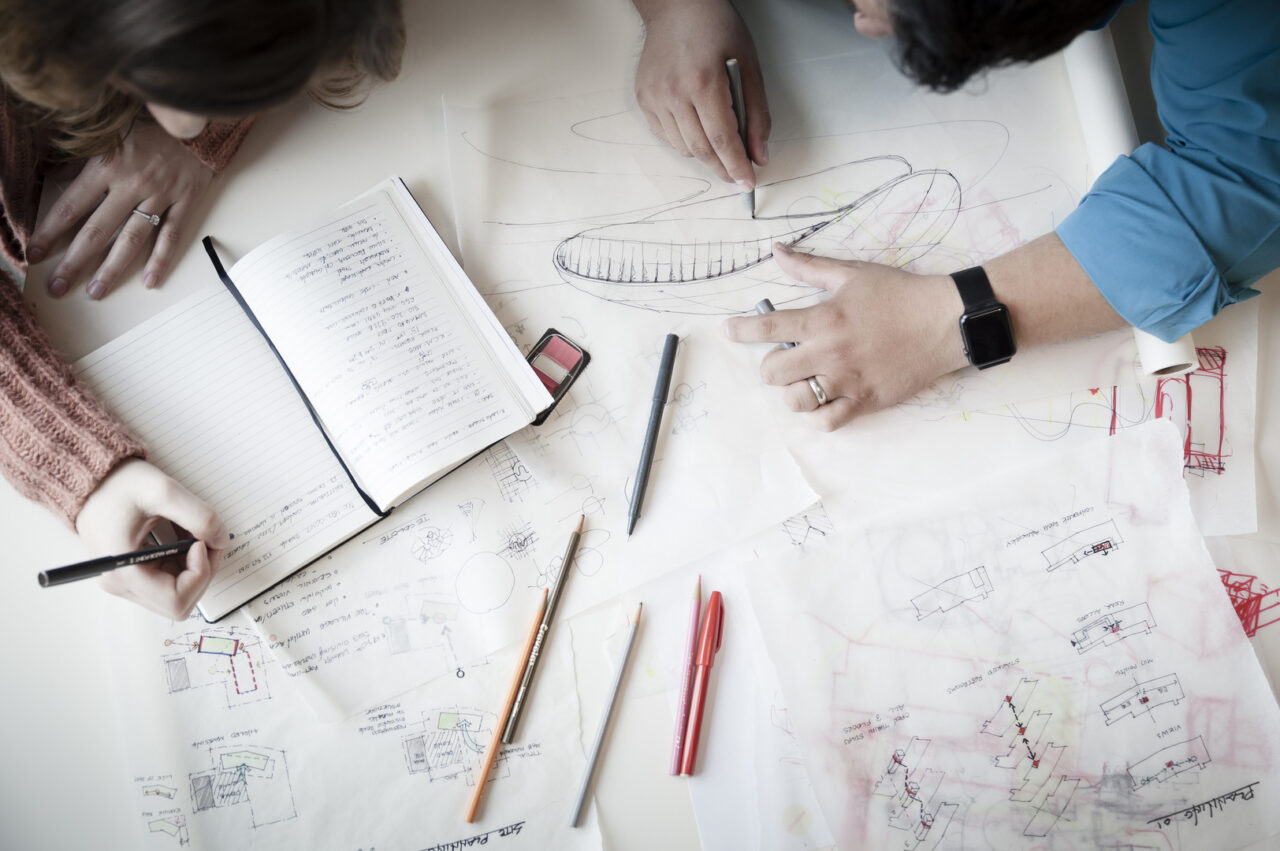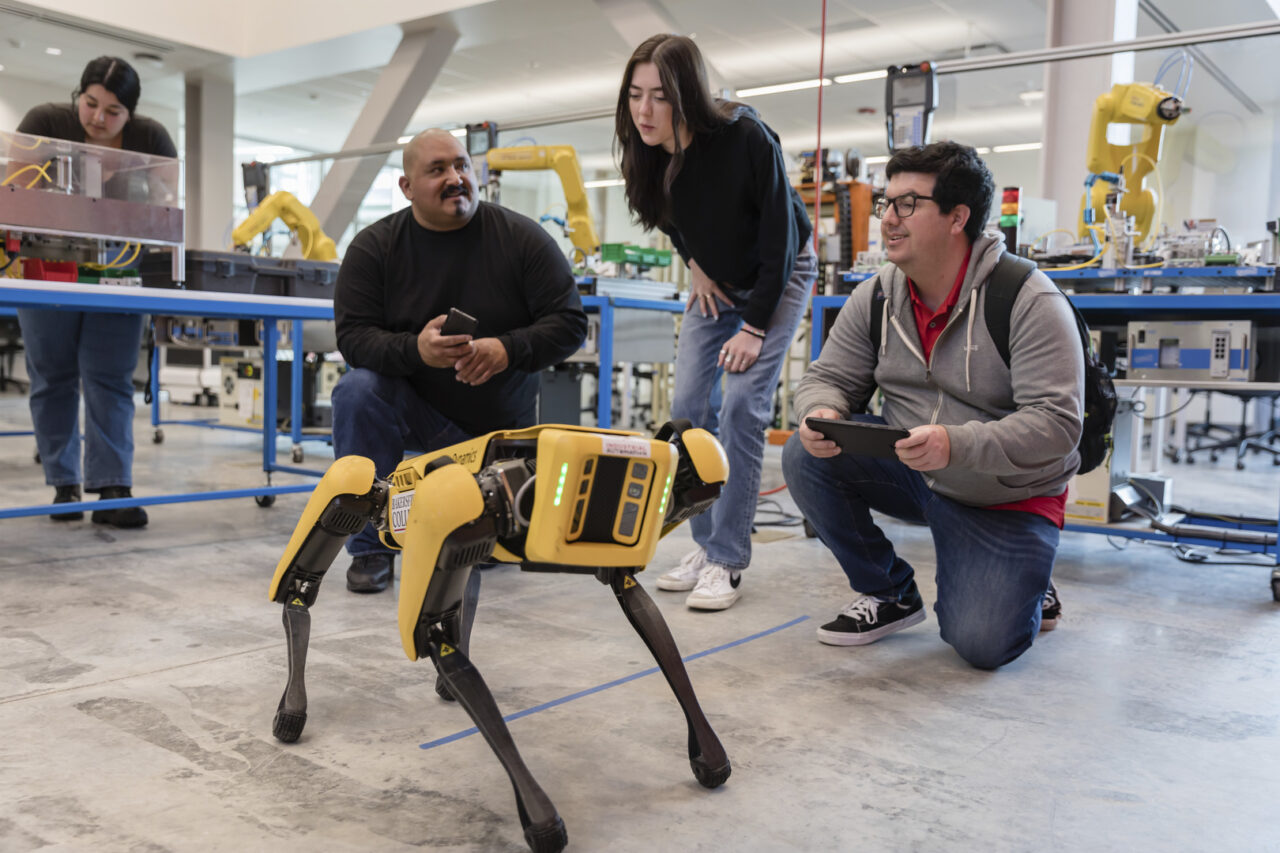Welcome to Five in Focus, HMC Architects’ blog series spotlighting the trends, ideas, and innovations shaping the future of architecture and design. We engage with our design leaders in each installment to explore what’s inspiring them and gain valuable insights into their expertise.
This edition features Bill Kwon, HMC Architects’ Chief Technology Officer. Guided by the theme Let’s Be Better, Bill shares his perspectives on Craft, Patience, Continuous Improvement, Technology Entrepreneurship in Architecture, and the transformative role of Artificial Intelligence.
Let’s Be Better
1. Craft
Some of my fondest childhood memories revolve around drawing—sometimes to a fault. I vividly recall sketching spaceships during math lessons instead of paying attention. I would draw the same ship repeatedly, always striving for perfection, though never quite achieving it. Each attempt was an exercise in precision: straighter lines, rounder circles, finer details. This relentless pursuit felt strikingly familiar in architecture school, where I spent countless hours drawing plans, sections, and elevations and constructing two-point perspectives. Today, architects have an array of advanced tools and technologies that produce remarkable results, yet the same dedication to the craft of using these tools often feels absent. I’ve always approached software the way I once approached pencils, pens, and charcoal—by exploring what they could do and their limitations. It was never just about creating a great drawing of a starship; it was about mastering the tools at my disposal. While sophisticated 3D parametric modeling systems are far more complex than pencil and paper, the principle remains the same. The craft of using these tools skillfully is still essential—and ultimately, it’s this attention to craft that leads to genuinely superior outcomes.

2. Patience
Getting good at anything requires two fundamental ingredients: time and effort. While technology and software can enable us to accomplish incredibly powerful things more easily, there are always varying degrees of mastery. Like playing the piano, there will always be those with extraordinary, seemingly effortless talent—but they are outliers. For the rest of us, developing expertise with complex software or thinking computationally about design outcomes demands consistent effort. It’s a process of rinse and repeat. Equally important, however, is the patience required to learn, experiment, and make mistakes—and the confidence to trust that every misstep is a step toward improvement. Tools like Revit aren’t easy to master, but giving yourself the time to learn, adapt, and grow is critical. We all inherently understand how to do it, even if we don’t always acknowledge it. Sometimes, it takes patience and determination to reach a better state.
3. Continuous Improvement
We can learn a great deal about improvement cycles from ‘design thinking.’ While designers and architects approach every problem as a design challenge, there is a unique rigor found in systems, software, and product design. One of its primary tenets is placing people—those for whom the product is intended—at the center of the process. Equally important is the built-in feedback loop: assess, measure, improve, validate, and repeat. The effort is ongoing. Although the final product doesn’t linger in purgatory awaiting perfection, the lessons learned, and the inevitable innovations continue to shape future iterations—not just of that product but of others to follow. For architects, this mindset feels familiar. Many of us share an innate desire to refine and improve designs, sometimes even to the detriment of on-time delivery. However, continuous improvement doesn’t have to mean endless revisions that strain deadlines. Instead, it’s about embedding a disciplined, thoughtful approach into our processes—learning at a project’s micro and macro levels. It’s about making each building, space, or experience a little better than the last.

4. Technology Entrepreneurship in Architecture
Innovation in the AEC industry often needs to be faster compared to sectors like financial services, pharmaceuticals, and life sciences. This lag is partly due to the extended project delivery timelines and the inherent risks and complexities of collaborating with owners, builders, consultants, and suppliers. However, with each new generation of technology comes the potential for transformative solutions. Innovation rarely emerges in isolation—it builds on the discoveries before it. In architecture and construction, opportunities for advancement exist at every stage of a built asset’s lifecycle. On the design side, there’s vast potential for improving the tools we use to solve design challenges, enhance building performance (both from human-centric and sustainability perspectives), and explore new material science applications. In construction, innovations in logistics, financial predictability, robotics, and 3D printing are revolutionizing the field. Operationally, there’s room to rethink facilities and portfolio management for greater efficiency. The true power of these innovations lies not in the technology alone but in entrepreneurial thinking. It’s about challenging the status quo and being curious to ask, “Is this as good as it gets?” This mindset—no matter the scale of the change—is the spark that drives meaningful transformation.

5. AI
AI will profoundly shape how we live, work, and solve problems. As a lifelong sci-fi fan, I can’t help but approach AI with a mix of wonder and caution—imagining it as either a savior or a destroyer. But my rational side believes it will likely be neither. While AI itself may not directly solve climate change, our discoveries with its help—combined with our current knowledge—will undoubtedly lead to innovative solutions. How we apply these discoveries will determine their impact. When it comes to whether AI will ‘replace’ architects, I don’t believe it will. Designing and building something requires managing relationships, resolving conflicts, and navigating complexities—areas where machines currently fall short. AI is adept at handling transactional interactions but less effective at addressing nuanced human dynamics. Historically, machines have amplified our ability to perform tasks with incredible speed and precision, and when paired with creative thinkers, they’ve fueled remarkable innovation. The same holds for AI. It will enable us to make significant leaps in efficiency, handle far more design variables simultaneously, and uncover new ways to bring value to clients and the communities they serve. While our profession—like every other—will experience significant change as AI becomes more integrated, the question isn’t whether architects will exist but What will architectural practice look like in an AI-normalized world? And more importantly, how can we harness this technology to elevate our profession and maximize the value we provide?

